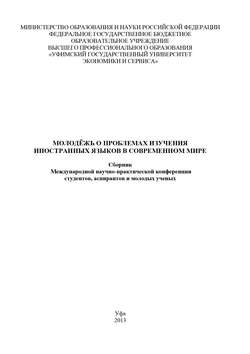Читать книгу Молодежь о проблемах изучения иностранных языков в современном мире - Коллектив авторов - Страница 3
LINGUISTIC AND CULTURAL FEATURES OF “NURSERY RHYMES”: BIOMORPHIC CODE
ОглавлениеУДК 801.81
BAGDASAROVA C.
Tver State University (Tver)
The collection of poems and verses for children under the title “Nursery Rhymes” reflects the unique English linguacultural society. Almost each poem includes specific lexical items that indicate typical and culturally colored options, many of which are associated with certain archetypes.
Due to the basic codes of culture [1], in the collection “Nursery Rhymes” biomorphic code is nationally specific. Under this code different creatures that inhabit the world are understood. The following poem reflects the features characteristic of the English culture of the 17-19th centuries. A good wife and housewife is compared with a caring hen.
I had a little hen,
The prettiest ever seen;
She washed up the dishes,
And kept the house clean.
She went to the mill
To fetch me some flour,
And always got home
In less than an hour
She baked me my bread,
She brewed me my ale,
She sat by the fire
And told a fine tale
The analysis of the poems from the book «Nursery Rhymes» shows that animals and plants as the parts of the biomorphic code have got nationally specific meaning and are used within the so-called historical subtext. The biomorphic code is represented by 125 items.
If we follow the classification of the realias [2], the biomorphic code of the English children’s folklore can be divided into two categories. We are speaking about geographic and ethnographic realities and their temporary subdivision. The poem about Robin Redbreast, i.e. a robin with a red breast, includes implicit references to the legend of how the robin’s tail changed its colour from light brown to red. The bird wished to ease the suffering of Jesus Christ, so it sat on the cross and began to sing while drops of Christ's blood were watering his feathers.
Little Robin Redbreast sat upon a tree,
Up went pussy cat, and down went he;
Down came pussy, and away Robin ran;
Says little Robin Redbreast, Catch me if you can.
Little Robin Redbreast jumped upon a wall,
Pussy cat jumped after him, and almost got a fall;
Little Robin chirped and sang, and what did pussy say?
Pussy cat said, Mew, and Robin flew away.
The options of these codes are similar in English and Russian languages, but the cultural myths are different. For example, the English connect the bird’s red breast with the red uniform of the British postmen, who are called “robins” because of uniforms’ bright color. In the 19th century the picture of a robin-postman was printed on postage stamps and Christmas cards. In Russia a postman, who delivers the Christmas and New Year greetings, is traditionally represented by a bullfinch.
Interpreters should look for the necessary language means to represent differences in the cultural biomorphic codes.
References
1. Krasnykh V.V.: Etnopsikholingvistika i lingvokul'turologiya: Kurs lektsiy. – M.: ITDGK «Gnozis», 2002. – 284 s.
2. Florin S., Vlakhov S. Neperevodimoye v perevode. – M.: Izdatel'stvo «Mezhduna-rodnyye otnosheniya», 1980. – 341 s.
3. Stikhi Matushki Gusyni: Sbornik / Na angl. i russk. yaz. – M.: OAO Izdatel'stvo «Raduga», 2003. – 384 s.
